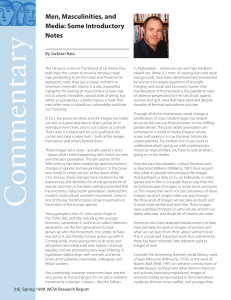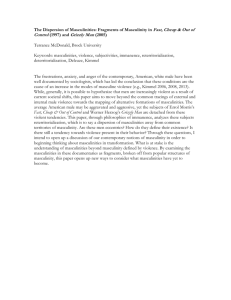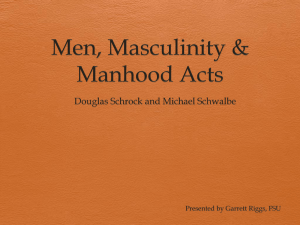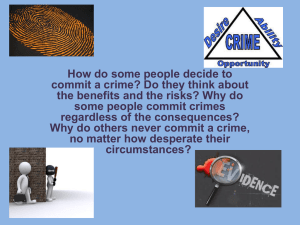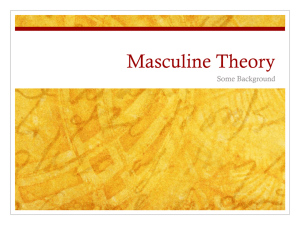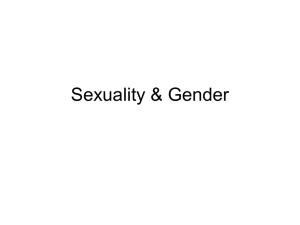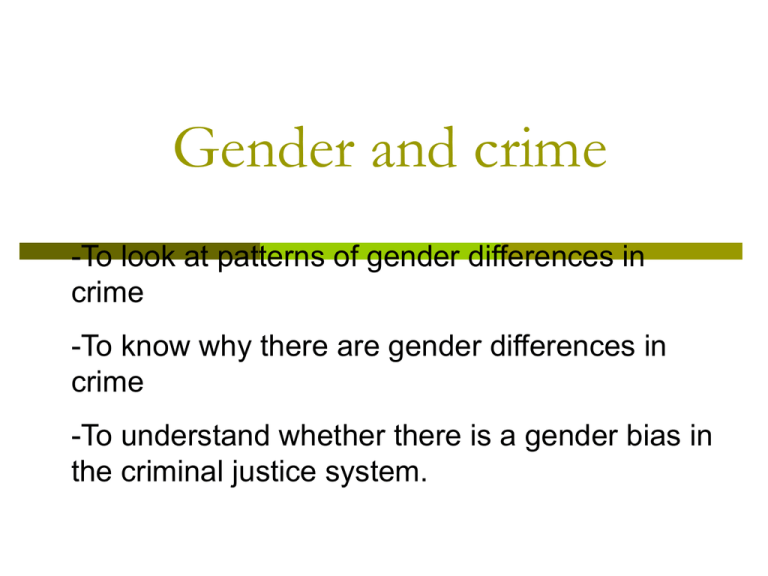
Gender and crime
-To look at patterns of gender differences in
crime
-To know why there are gender differences in
crime
-To understand whether there is a gender bias in
the criminal justice system.
What do the statistics indicate?
http://www.statistics.gov.uk/CCI/nugget.asp?ID=
442
History
Little attention used to be paid to gender
differences in crime – instead – focused on
why some men more than others likely to
commit crime.
1970’s – feminists (Carol Smart 1977)
raised questions such as:
Why do women commit less crime?
Are they treated differently by CJS?
Why are women more likely to conform to
social norms?
Explanations
Sex role theory- Boys and girls socialised
differently
Edwin Sutherland (1949) girls – controlled, boys –
aggressive/risks.
Synoptic link – write down some examples of
gender differences within the family and how
these might relate to criminal behaviour.
Parsons (1955) clearly defined gender roles in the
Modern nuclear family. Boys lack male role model.
Largely socialised by mother – reject feminism.
Sex role theory continued…
Cohen – 1955- Socialisation difficult for boys
– lacking male role model. Boys experience
anxiety about their identity as young men.
This masculine identity can be found on streets
/ in gangs (being tough, taking risks).
Can you think of any examples?
Gang leader
Showing aggression
Breaking rules.
Fights – expressing masculinity.
Evaluation
Explains differences in terms of learned
behaviour rather than biological
differences.
However, feminists criticise sex role theory
for failing to consider gender differences and
power.
Feminist perspectives
Use the yellow textbook and Haralambos
to research the feminist perspectives of
crime.
Pat Carlen (1990)
Heidensohn (1996,2002)
Write detailed notes and fill in your grids.
Why do men commit significantly more
crime than women?
Men, masculinities and crime – James
Messerchmidt (1993) – different conceptions
of masculinity lead to different social actions.
Structuration theory – People’s actions
change structure of society. E.g. patriarchy
Masculinity – try to express in different ways.
Hegemonic masculinity – dominant, highly
valued.
Subordinate masculinity- less powerful,
carries lower status (African – American
subcultures – pimp, gangster)
Crime is a resource for expressing
masculinity
‘ Crime by men is a form of social practice
invoked as a resource, when other
resources
are unavailable, for accomplishing
Masculinity’.
- Explores why different types of men
commit different types of crime.
Young white middle class males –
express hegemonic masc through
success at school.
White w/class males – resist school
and construct their masculinity –
physical aggression, anti-social
behaviour.
Lower working ethnic minority
males –
Street gangs, robbery, street crime.
Social class and masculinities
White collar crime – A means of
accomplishing hegemonic masculinity.
W/class males – resisting authority/theft –
accomplishing masculinity.
Ethnicity and masculinities
African American males lack the resources
to accomplish hegemonic masculinity.
Pimp/hustler – alternative subordinate
masculinity.
Evaluation
Use the yellow textbook page 260 to write
an evaluation of Messerschmist’s theory.

